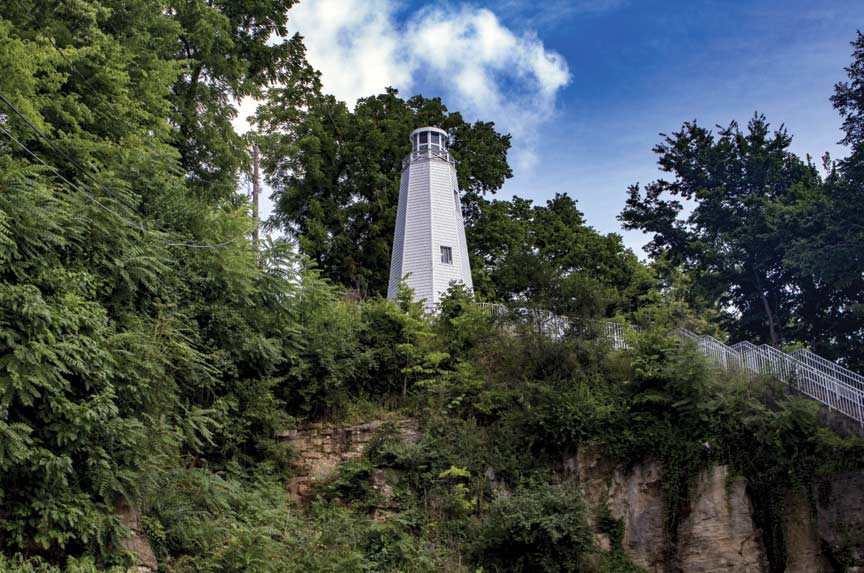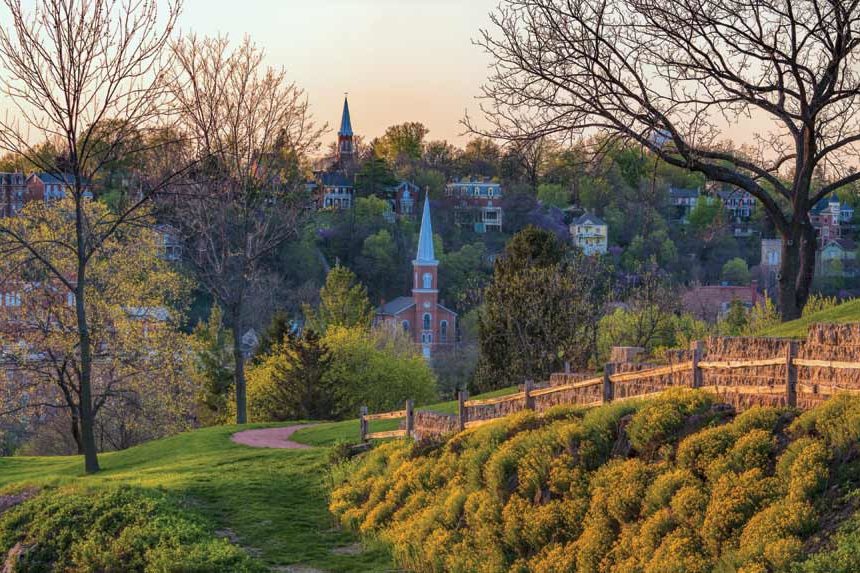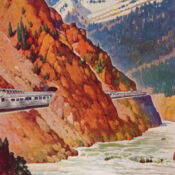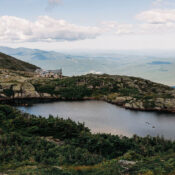In an earlier issue (May/June 2018), I mentioned I would be taking a solo motorcycle trip south along the Mississippi River on my 1974 Triumph Bonneville. Several Post readers wrote asking if they could join me, one of whom was a woman wanting to know whether I was married and if I might like a little company. Apparently, there is nothing like a motorcycle trip to excite the imagination.
I’m pleased to report the trip was a success, though it went nothing like I had planned. When Rod Collester, my friend and a vintage Triumph expert, learned my intentions, he advised me not to ride a 44-year-old motorcycle with an oil leak rivaling the Exxon Valdez halfway across the country. Fortunately, I also own a new Triumph Bonneville that from a hundred yards away looks a lot like my old Triumph Bonneville, which, as we say in Indiana, is close enough for government work, so I rode it instead.
Then two friends, Ned and Mike, heard of my trip and asked if they could come along, and I said yes, even though they ride a Honda and a Harley Davidson. While I never hold someone’s gender, religion, race, national origin, or sexual orientation against them, I have been known to look down my nose at people with so little regard for Triumph motorcycles that they would ride something else. But I swallowed my pride and invited them to join me, provided they refrain from making snide comments about the size of my motorcycle (900cc) compared to theirs (1300 and 1800 ccs). They kept their word for the first hundred miles, and then Ned referred to my bike as a “moped” and Mike laughed so hard he snotted himself.
By some quirk of fate, we left on our trip the same day the tropical cyclone Alberto hit landfall in the Gulf Coast, spawning storms and record rainfall along our intended route. Instead of heading south, we rode northwest 350 miles to Galena, Illinois, where Ulysses S. Grant was living when the Civil War broke out, working as a clerk at his father’s store, a job he despised but took because he was broke. If you ever feel like giving up, it might help to remember that in 1857, Grant pawned his watch to buy Christmas gifts for his family, then 10 years later was a national hero, well on his way to the presidency. (Grant was so virtuous, I can’t help but think that if the motorcycle had been invented then, he would have ridden a Triumph Bonneville.) We spent the night at the DeSoto House Hotel, built in 1855 and named after Hernando De Soto, who was purported to have discovered the Mississippi River on May 8, 1541, much to the surprise of the Native Americans who were already there, many of whom he promptly killed.
In Olney, a storm struck from the northwest, and I prayed it would give birth to a tornado and kill me dead.
The next morning, dodging Alberto’s offspring, we rode south along the Great River Road to Fort Madison, Iowa. If you’ve ever eaten Armour bacon, then in a roundabout way you’ve visited Fort Madison, too, since their processing plant is southwest of town along Highway 61. The scent of meat hangs over the place, a not altogether unpleasant aroma. Every town should be so fortunate to smell like bacon. We stayed the night in a Super 8 motel owned by a man from India who, though unintelligible, was thoroughly helpful. I’m not sure why so many Indians own hotels in America, and I don’t care so long as the rooms are clean and they have a TV channel that shows The Andy Griffith Show and Gunsmoke.
The next day found us in Hannibal, Missouri, the hometown of Mark Twain, which we would never have figured out except for the Mark Twain Hotel, the Mark Twain Restaurant, the Mark Twain Cave, the Mark Twain Antique Shop, the Mark Twain Museum, Mark Twain Avenue, the Mark Twain Boyhood Home, the Mark Twain Memorial Lighthouse, and the Mark Twain Brewing Company, where Mike, against our advice, danced on a table. Continuing southward, we eventually crossed the Mississippi on the Golden Eagle ferry, motored seven pleasant miles across the Brussels peninsula, ferried across the Illinois River, and stayed the night at the Pere Marquette State Park Lodge, built by the Civilian Conservation Corps during the Great Depression. The next time someone tells you the government can’t do anything right, take them to the Pere Marquette State Park Lodge six miles west of Grafton, Illinois, and show them what America did when it had intelligent and visionary leaders.
If on the Judgment Day I am sentenced to hell, I will appeal the verdict by pointing out that I have already been there, on U.S. 50 crossing Illinois from Lebanon to Lawrenceville, an unrelentingly boring stretch of road 119 miles in length that felt like a thousand. In Olney, a storm struck from the northwest, and I prayed it would give birth to a tornado and kill me dead. Alas, I was not so fortunate and entered Indiana at Vincennes, the hometown of my parents and, coincidentally, Ned’s residence while serving as a district superintendent for the United Methodist Church during his years of checkered employment. I asked Ned if he wanted to go off the bypass and ride through town and he said “God, no,” or something to that effect. I could only conclude that when he left Vincennes, he had been asked never to return.

We continued east on U.S. 50 through Amish country down to French Lick, hometown of basketball legend Larry Bird, where we stopped for dinner at the West Baden Hotel and ate grilled cheese sandwiches, the only thing on the menu we could afford. From there, we rode through the countryside to our farmhouse in Young’s Creek, built by my wife’s grandfather, Linus Apple, in 1913 and restored 98 years later by my wife and me before I spent all our money on motorcycles.
The next day found us heading north toward home, a formerly bucolic drive until Indiana’s governor, three governors ago, had the bright idea to turn a perfectly good state highway into an interstate, transforming a two-hour jaunt into a four-hour Sisyphean slog. I rolled into our garage five days and 1,123 miles after our departure and remain, to this day, a jaded and weary man, worn down by the road and my association with two dubious characters. Next year, I am informed, we will tackle the Natchez Trace Parkway through Mississippi, Alabama, and Tennessee. I can hardly wait.
Philip Gulley is a Quaker pastor and author of 22 books, including the Harmony and Hope series featuring Sam Gardner.
This article appears in the November/December 2018 issue of The Saturday Evening Post. Subscribe to the magazine for more art, inspiring stories, fiction, humor, and features from our archives.
Become a Saturday Evening Post member and enjoy unlimited access. Subscribe now




Comments
Thanks for the great cartoons! That’s one of the things I always enjoyed about the S.E.Post.
What a tremendously written story of our history. Thank You, Sir!